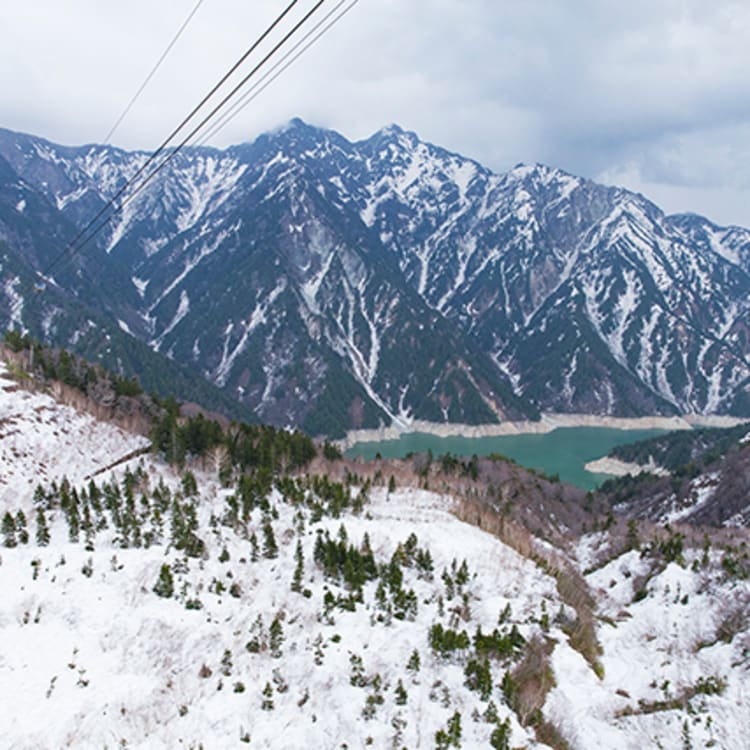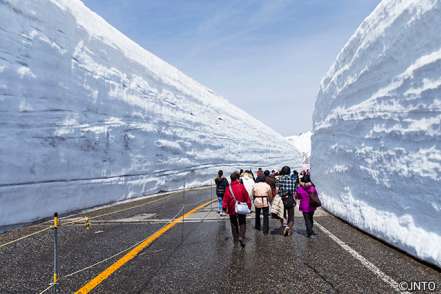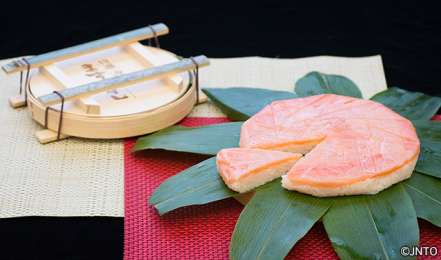
GUIDE Tateyama Kurobe Alpine Route, Toyama by JNTO on 09 September 2018
Located along the Sea of Japan coast, Toyama Prefecture is part of the Northern Japan Alps. The capital of the prefecture, Toyama City, can be a sleepy, quiet city compared to the hustle and bustle of Tokyo.
Toyama City is a former castle town and historically a centre of traditional medicine since the Edo period. These days, the city is a popular stopover for tourists visiting its out-of-town attractions. There’s the Kurobe river out to Toyama Bay for adventure sports, or the scenic trip up to the Japanese Alps and the Tateyama Kurobe Alpine Route.
The Alpine Route is traversed by various means of transportation including cablecars, trolleybuses and a ropeway, connecting Toyama City with Omachi Town in neighbouring Nagano Prefecture.
From Tateyama Station, a cablecar ascends to Bijodaira Station (7 minutes) before you transfer to a Highland Bus service to Murodo (50 minutes) through the Midagahara Highlands with its alpine plants that change colour in October. During spring (April to mid June), the bus goes via the Yuki-No-Otani snow corridor, the ice walls of which goes up to 19m high on both sides of the road.
Close to the peak of Mt. Tateyama (3,015m) is Murodo (2,450m) which has restaurants, a hotel (the highest in Japan), and an onsen. In autumn, you can tackle the hiking trails to the surrounding peaks and the Jigokudani "Hell Valley" with its volcanic fumaroles.
Bid farewell to the gorgeous views and cut through the heart of Mt. Tateyama – through the Kanden Tunnel – via trolleybus (10 minutes) to Daikanbo where a ropeway (Japan's longest single-span ropeway) descends on the other side of the mountain to Kurobedaira (7 minutes), gliding above the brilliant orange and red autumn forests.
A cablecar ride (5 minutes) then takes you to the Kurobe Dam – the end-point of the Alpine Route, a marvel of engineering that sits 186m above the Kurobe River below. Sightseeing cruises operate in autumn, and it is especially spectacular when the dam discharges water between late June and mid October.
You leave the dam on a 15-minute trolleybus ride through a tunnel to Ogizawa; from here, regular buses take you towards Omachi in Nagano in 40 minutes.
What is the best time to see the autumn foliage?
Since the route has different elevations, autumn leaves are visible anywhere along the way from late September to late October. The change begins at higher elevations (like Murodo at 2,450m) and moves down the mountain.
Depending on when you visit, the colour contrast is breathtaking. The treeline remains solidly green until about 2,000m, where suddenly the entire landscape is a lush orange and red. If you’re lucky, snow can come as early as October so you can even see three colours: fresh snow on the mountaintops, red fall leaves in the middle, and green trees a the base of the mountain.
From early or mid-November, Murodo is covered with a blanket of snow that stays until spring – you can visit this snowy landscape until late November before the park closes from December to mid April.

Local Delicacies
There are a number of restaurants dotted along the Alpine Route, and at most places you’ll find the ubiquitous curry rice – a scoop of rice served on a sea of sweet Japanese curry sauce. Depending on the restaurant, you can find stewed meat curry, halal curry, as well as pork katsu (deep fried pork) curry. Restaurants around Kurobe Dam serve the dish with names like Arch Dam Curry – the rice is shaped like the namesake dam.
Toyama sits right by Toyama Bay, which is famous for hotaru ika, the firefly squid that give the Bay an iridescent glow in the evenings. The squid is part of the local Port Sushi, served in a ten sushi set of local fish served in most restaurants, some of which also carry Masu Sushi, a pressed triangular-shaped sushi of vinegared trout sashimi on a bed of rice, wrapped in bamboo leaves.
Autumn is a good season for shiro ebi (white shrimp, or glass shrimp), a Toyama specialty of translucent sweet local delicacy best eaten raw, or as a tempura. The shrimp lives only in Toyama Bay, and a limited amount are caught every year.
A favourite local dish is Toyama Black, an inky black ramen with rich flavours. Unique to Toyama City, the soup has a strong black soy sauce base – but it’s offset with a very light broth to balance out the flavours.

How do you get to Tateyama Kurobe Alpine Route?
From Tokyo, you can get to Toyama City via the JR Hokuriku Shinkansen in about two hours. You can also fly from Tokyo Haneda to Toyama City in about an hour. From Toyama City, the Toyama Chiho Railway gets you to Tateyama Station – where you begin the Alpine Route with a cablecar ride – in about an hour. Most people do the route as part of a tour. Check out their official Alpine Route site for more.
When: From mid April to end November (best time for autumn foliage is end September to early November)
Time: The last cablecar from Tateyama Station is 5pm (until Nov 4); the entire route can be done in 6-7 hours.
Entrance fee: Free, but transport fares are charged separately
























































